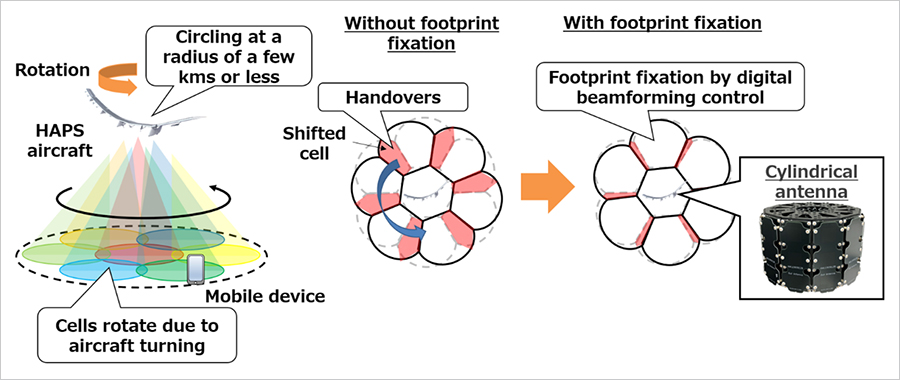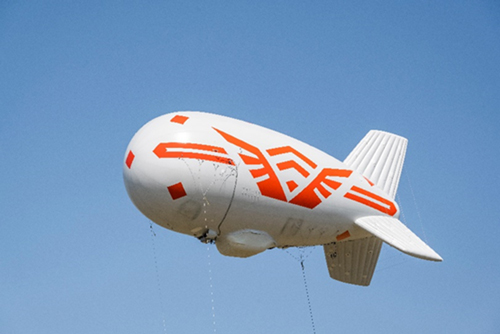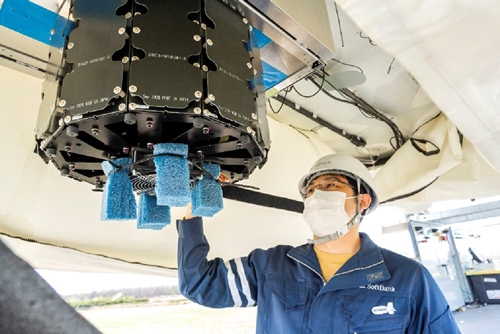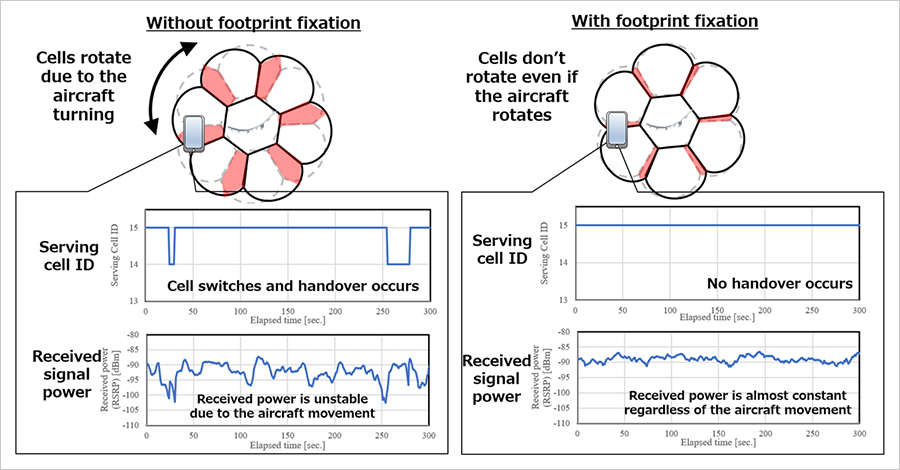Press Releases 2022
SoftBank Corp. Successfully Tests
High-altitude Tethered Balloon Base Station System
that Utilizes Footprint Fixation Technology
Trial results will be utilized to research network disaster preparedness and HAPS applications
June 22, 2022
SoftBank Corp.
HAPSMobile Inc.
SoftBank Corp. (“SoftBank”) today announced that it developed a high-altitude autonomous tethered balloon base station system with US-based, SoftBank Group Corp. investee Altaeros Energies, Inc. (“Altaeros”), and that both companies successfully achieved stable and wide-area network coverage with this system at a field trial conducted at Hokkaido Spaceport, Taiki Town, Hokkaido, Japan, in May 2022. During the trial, Altaeros' autonomous tethered balloon (aerostat) and SoftBank's base station system was equipped with SoftBank's proprietary cylindrical antenna*1, a multi-element phased array antenna that realizes communication area footprint fixation*2. This novel technology, developed by SoftBank and its subsidiary HAPSMobile Inc. (“HAPSMobile”) to enable stable connectivity regardless of airborne motion, is being researched with the aim of providing stable network coverage (a footprint) from the stratosphere using High Altitude Platform Station (HAPS) technologies (Figure 1).
To restore telecommunication networks in the event of a disaster, SoftBank has implemented tethered-balloon wireless relay systems. The field trial conducted in May combined SoftBank's footprint fixation technology and Altaeros' ST-Flex*3 high-altitude autonomous tethered aerostat. Compared to the previous system, the newly developed high-altitude tethered aerostat base station system was operable at higher altitudes and carried heavier communication payloads, and it also achieved wider area network coverage with greater communication stability during the trial (Figure 2).
Using airborne base stations, HAPS platform aircraft provide mobile wireless telecommunications from the stratosphere to the ground while flying in a circle. One challenge is that the communication area, or footprint, projected to the ground cannot be fixed because cells rotate as the aircraft turns, which in turn causes frequent handovers*4 and affects reception strength levels, thereby impacting telecommunications quality. By using a cylindrical antenna with digital beamforming*5 control, SoftBank's footprint fixation technology secures the cell footprint on the ground by controlling the direction of radio beams as the airborne vehicle rotates, which is essential for airborne wireless telecommunications platforms (Figure 3).
High-altitude autonomous tethered aerostat and base station system features
- 1.A unique, AI-based, three-tether control system that can control and stabilize the aerostat at altitudes of up to 305m*6
- 2.Carries heavy communication payloads of up to 60kg
- 3.Operates at high altitudes of up to 305m to enable wide-area network coverage
- 4.Delivers stable network coverage regardless of aerostat rotation, motion and pitch/yaw thanks to footprint fixation technology
- 5.Autonomous aerostat autopilot system eliminates the need for onsite operators
During the field trial conducted at Hokkaido Spaceport, Taiki Town, Hokkaido, Japan, the ST-Flex system was tethered at an altitude of 249m. Under good line-of-sight, wide-area network coverage of a few tens of kilometers*7 and stable connectivity enabled by footprint fixation technology was successfully verified. Furthermore, even when the altitude, pitch and yaw of the aerostat equipped with the base station changed due to changes in wind speed and direction, there were no handovers for mobile devices and signal reception levels were unchanged. As a result, stable connectivity was verified (Figure 4).
Based on the results of this field trial, SoftBank will study ways of utilizing its acquired know-how and data for application to its telecommunication network disaster preparedness and the construction of HAPS-based telecommunication platforms.




- [Notes]
-
- *1For more information, please see this September 2, 2021 notice “SoftBank Corp. and HAPSMobile Accelerate High Altitude Platform Station (HAPS) R&D to Provide Stable and High-quality Connectivity for Future Commercial Services”.
- *2A technology that fixes a communication area (footprint) for each cell formed on the ground by radio waves emitted from an aircraft equipped with a communications payload. It achieves this by changing the direction of the radio waves as the aircraft rotates.
- *3For more information on Altaeros' ST-Flex, please visit their website.
- *4The process by which a mobile device switches from a serving cell to another cell.
- *5A technology that concentrates radio signals in a specific direction by digitally controlling the amplitude and phase of the transmitted signal.
- *6During the field trial, the system was tethered at an altitude of 249m.
- *7Distance between the mobile terminal and the tethered aerostat and base station system
- *1
- SoftBank, the SoftBank name and logo are registered trademarks or trademarks of SoftBank Group Corp. in Japan and other countries.
- HAPSMobile is a registered trademark or trademark of HAPSMobile Inc.
- Other company, product and service names in this press release are registered trademarks or trademarks of the respective companies.